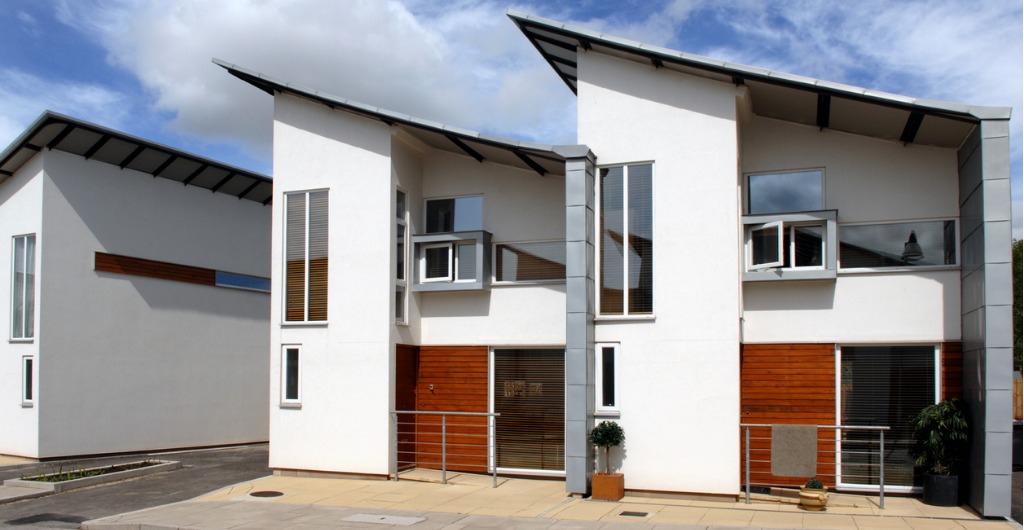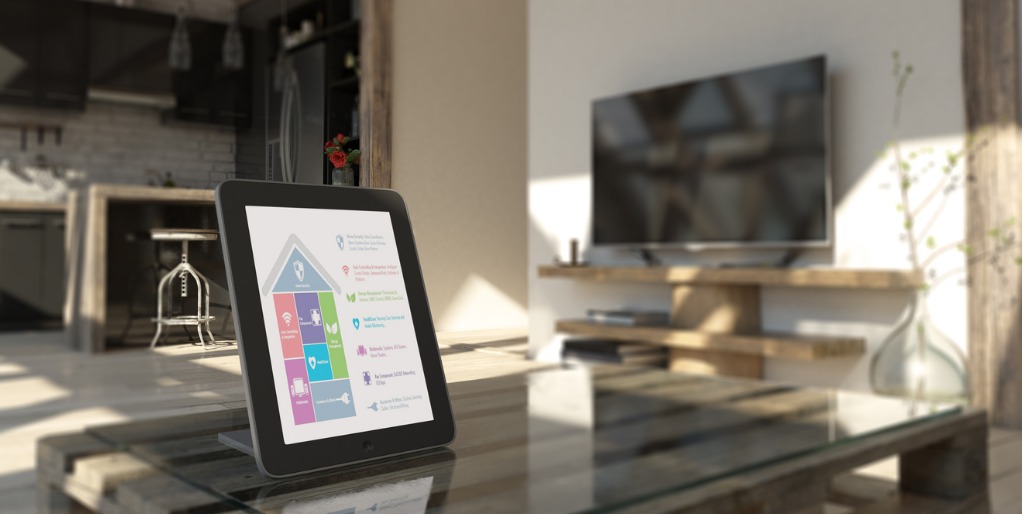Looking at energy use in the home, the last century has seen extraordinary transformation, as relative affluence and technological advancement drove new devices and behaviours. In the last decade the speed of change has accelerated further, pushed on by the digital revolution. The change in energy use has changed the way we use our homes already – but what will this mean for our homes over the next 20 years?
We are already seeing the future today. The installation of smart meters is a starting point for increasingly connected homes. Increased connectivity gives us the opportunity to control more of our homes’ functions as well as monitoring energy consumption, which should allow us to become more conscious consumers.
Clean energy commonplace
Low-carbon energy options are no longer unusual in the domestic environment, either. Solar panels are a relatively common sight on the roofs of UK homes, businesses and municipal buildings, while low-carbon heating options are increasing in popularity, at least in part due to the government’s Renewable Heat Incentive scheme. The next couple of decades will likely see further inroads by renewable heat options into gas’s dominance of the heating market, as well as systems that utilise a range of fuels depending on circumstance.
Where things may well change with renewable electricity generation, is a greater move towards incorporating energy-generating elements into the fabric of homes themselves. Solar tiles are already an established technology, but solar windows could be the next big thing, and maybe even solar paint.
Linking up, managing demand
Managing the demand for energy and matching it with the available supply is one of the key challenges of the near future. Technological convergence will allow us to bring together green energy generation and its use in different areas across the home and on the move. For example, a home’s energy supply and household’s electric vehicle are no longer seen as separate entities, only connected by a plug, but involved in mutual relationships. A vehicle, when not in use, could store electricity to be used by the home later – a uniquely mobile kind of battery.
Less mobile options for energy storage are also attracting greater interest. With financial incentives for generating clean energy waning, there’s likely to be a shift in emphasis towards getting the most out of renewables by storing excess energy for use at a time of higher demand. We’ve previously covered the pros and cons of home energy storage in more detail, and with big new players entering the home battery market like Duracell and Tesla, this is an area of technology to file under ‘dead cert’ for any vision of future homes.
On the subject of energy demand, homes of the future are likely to come with a greater range of power tariff options. Time of use tariffs are set to grow, encouraging householders to become independent energy demand-managers from the comfort of their settee.
Homes of the future are already here
Some of these ideas around storing energy and convergent technologies are already being trialled in the UK. A collaboration between Eon and Berkeley Homes in London, for example, combines solar glazing with battery storage and a single dashboard for controlling the home’s energy-using activities. In Wales, Cardiff University has been showcasing an energy positive home, which integrates a range of solar technologies into the design of the property, as well as incorporating heat pumps and energy storage. The home’s designers see this not as ‘pie in the sky’ thinking, but a realistic alternative to the current housing market.
Tougher targets for new buildings
A continuation of the tightening of Building Regulations is expected to continue to change how new homes are constructed, with the success of continental approaches like Passivhaus influencing much higher levels of insulation being installed in building fabric. The UK Government’s Spring Statement made a commitment to introducing its Future Homes Standard, which will include ‘world-leading levels of energy efficiency’ and low-carbon heating in all new build homes.
But a changing climate and improved thermal efficiency of homes could introduce new problems. Building energy efficient new homes and retrofitting older properties without consideration of the natural energy gains from people, appliances and particularly the sun could risk overheating. If we’re going to avoid becoming a nation that relies on air conditioning we’ll need to see more blinds, shutters, tinted glass or even electronically dimmable windows.
Ventilation, ventilation, ventilation
Ventilation can help cool a building, but it’s even more important for managing internal air quality and avoiding condensation problems. As we build our new homes to ever tighter standards, and as we insulate and draught-proof our older homes, we need to get better at providing enough ventilation to keep the building and its occupants healthy while not ramping up the heating bills.
The technological options for more advanced home ventilation today, which look set to become increasingly common, include Passive stack ventilation (PSV), Mechanical extract ventilation (MEV) and Mechanical ventilation with heat recovery (MVHR). The latter is particularly interesting as incoming air is preheated by outgoing stale air, minimising the heating energy that is lost.
All of these technologies are available now, but if we’re going to rely on them to provide the right ventilation we need to make sure they are correctly operated. There are two approaches to this: either we all need to become experts in managing ventilation, or more practically, we need to install smart ventilation controls to be the experts for us. We’re starting to get used to the idea of smart heating controls – smart ventilation is no different. What’s more, it could work hand in hand with the heating system to choose the optimum strategy for ensuring a comfortable home environment.
Homes of the near future are likely to be pretty similar to today but with increased tech delivering increased efficiencies. Where there are new elements, it’s vitally important that people have information and support to ensure ‘the new normal’ for UK housing delivers the intended energy efficiency levels.
- read Energy Saving Trust’s policy on ‘2050-ready’ homes
- Energy Saving Trust’s response to the Spring Statement March 2019
- discover more opportunities to make energy saving home improvements


